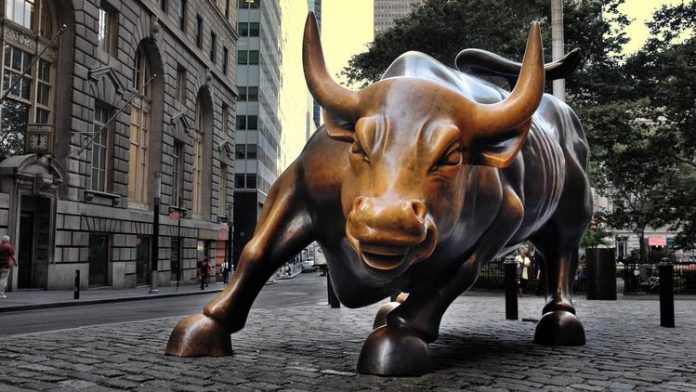Stocks rose this morning following an indecisive week of trading. Despite big time Big Tech earnings, the market refused to budge. Fed taper fears plus rising Treasury yields took the wind of tech’s sails. The resulting nervousness kept a lid on the major indexes.
Today, though, some stocks are climbing once again. Reopening-sensitive names – cruise lines and apparel stores – are overachieving. Disney (NYSE: DIS) is up significantly, too, alongside Berkshire Hathaway (NYSE: BRK.A), the latter of which reported better-than-expected earnings.
The old investing adage of “sell in May and go away,” hasn’t come to fruition yet. And last year, selling in May would’ve been a huge mistake.
But many strategists are expecting a rough month of trading for bulls now that earnings season is drawing to a close.
“This is a small number of observations, but May-October has lackluster average and median returns after a November-April rally of at least 20%,” explained Stephen Suttmeier, technical research strategist at Bank of America, in a note.
Going back to the early 1920s, the period spanning May to October has seen the lowest average S&P returns of any six-month period.
Other analysts, however, believe the market has more room to rise.
“Investors are gearing up for another busy earnings week capped off with a widely watched jobs report,” said Jack Ablin, chief investment officer at Cresset Capital.
“Given the positive economic and earnings news, the path of least resistance appears higher.”
The April jobs report, due out this Friday, will shed some light on the post-Covid economic recovery. Nearly every investor is waiting on an economic surge to close out the year.
The question is whether the US will be able to return to its pre-Covid trajectory. A vastly reduced labor force, thanks to a glut of government-supplied personal income, has made hiring for some businesses a significant challenge. American fast food chains have even started offering cash for job applications. Taco Bell has resorted to throwing “hiring parties,” providing freebies to prospective workers. Other industries are doing the same to fill entry-level positions.
This could unintentionally push wages higher as companies compete with unemployment, adding inflationary pressure. It could even push the Fed to a potentially more hawkish stance if wage growth accelerates fast enough.
Also limiting the economy is a continued chip shortage, which Intel (NASDAQ: INTC) CEO Pat Gelsinger believes could last several more years.
“We have a couple of years until we catch up to this surging demand across every aspect of the business,” he said in a 60 Minutes interview.
Gelsinger also mentioned how far US chipmaking has fallen, noting that only 12% of the world’s semiconductors are manufactured domestically. 25 years ago, over 37% of chips were made in the US.
“Anybody who looks at supply chain says, ‘That’s a problem’. This is a big, critical industry and we want more of it on American soil: the jobs that we want in America, the control of our long-term technology future,” he said.
The result could be some short-term pain for semiconductor-reliant companies. Automakers seem particularly at risk according to Taiwan Semiconductor Manufacturing Co. (NYSE: TSM) chairman Mark Liu.
“Today, we think we are two months ahead, that we can catch up [to] the minimum requirement of our customers — by the end of June. There’s a time lag. In car chips particularly, the supply chain is long and complex,” Liu said, also in a 60 Minutes interview.
Investors could look at this as a guidance revision across the board for car companies. Chipmakers are trying their hardest to keep up but can’t quite meet demand. Ford (NYSE: F) warned shareholders last week that the chip shortage would impact production, sending shockwaves through the industry.
That means investors shouldn’t necessarily buy-in to the idea that the US economy will return to normal any time soon. Yes, things are trending up, but the global chip shortage and a populace that refuses to work could harm May’s economic data – something the market will learn come June, right around the same time Liu thinks his company will catch up on its backlogged orders.
Until then, things could feel a little scrambled. Especially if the historical trend of “going away in May” eventually comes true later this month, sparking a short-term correction.








